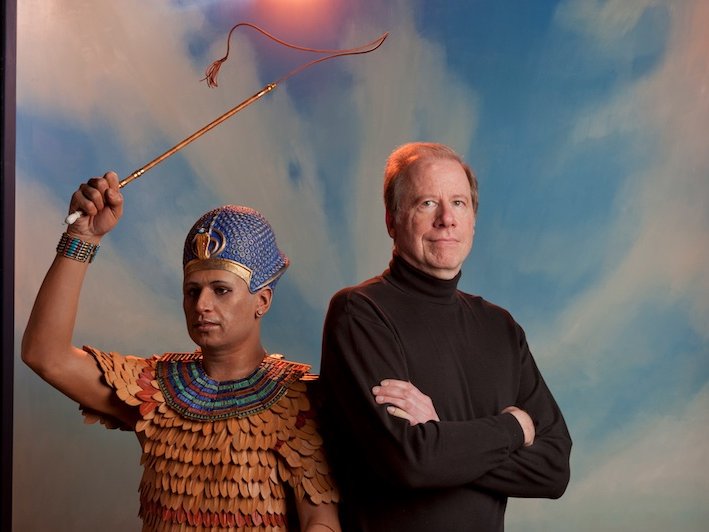Last week, OnMilwaukee.com posted an interview with Wendy Christensen, the creator of the Arabian horses pulling King Tutankhamun ("King Tut") in the new "Crossroads of Civilization" exhibit that’s opening at the Milwaukee Public Museum (MPM) on March 15.
This week, OnMilwaukee.com tracked down MPM exhibit artist Craig Yanek, the creator of King Tut and his chariot in the same display as Christensen’s horses.
Yanek has worked at the museum for 35 years. He started in the zoology section and later took the job as the museum’s artist.
"I went to college for zoology, but I’m a self-taught artist," says Yanek. "I’ve always had an interest in animals and art – particularly drawing and sculpture."
He has worked on many exhibits in the MPM, notably the 1994 rotating Native American display with 30 figures.
"I have no idea how many exhibits I’ve worked on here. I never kept count," says Yanek.
Yanek worked on Tut and his chariot for about 1,200 hours over the course of two years. To prepare for the construction, Yanek did 500 hours of Internet research and spent time reading books and examining illustrations. However, because he was making a 3-D version of Tut and his chariot, books were only helpful to a certain point.
"That was the most challenging part – figuring out how the chariot went together," says Yanek.
In 1922, Howard Carter, an English archaeologist and Egyptologist, discovered Tut’s intact tomb. Carter’s drawings were extremely useful to Yanek almost 100 years later. From the drawings, Yanek learned a lot about Tut’s clothing and jewlery, particularly his elaborate vest that required Yanek to master leather working.
Yanek’s Tut is 5-feet, 5-inches tall and made primarily out of plaster. His body was made through a "life casting" process and his face is a forensic facial reconstruction sculpted from a CT scan done in 2006.
To create Tut, Yanek had to rely on a slew of artistic and technical skills, including painting, sculpting, the aforementioned leather working, jewelry making, weaving and more.
"I also had to brush up on my gold leafing skills," says Yanek.
Yanek constructed Tut’s shield from a cheetah skin obtained from a cheetah who died of natural causes at the Milwaukee County Zoo.
Tut died in 1326 BCE at the age of 19. Although historians are uncertain how he passed away, Yanek says it may have been from a severe injury to his leg. However, the young king had many other ailments which could have ended his life.
Yanek says this was his most challenging project at the museum to date, but he is very pleased with the results.
"It turned out pretty good," he says.
With the "Crossroads" project behind him, Yanek is moving on to the Streets of Old Milwaukee rebuild. The beloved, 50-year-old exhibit will close briefly at the end of the summer for remodeling.
"I’m not exactly sure what all I will be doing, but I know I am building a streetcar," he says.
"Crossroads of Civilization" opens on March 15. It is the MPM's first new permanent exhibition in more than a decade and offers a glimpse of ancient Asia, Africa and Europe, spanning over 5,000 years, as societies grew and developed architecture, communication, social activities, belief systems, complex economies and military tactics.
Molly Snyder started writing and publishing her work at the age 10, when her community newspaper printed her poem, "The Unicorn.” Since then, she's expanded beyond the subject of mythical creatures and written in many different mediums but, nearest and dearest to her heart, thousands of articles for OnMilwaukee.
Molly is a regular contributor to FOX6 News and numerous radio stations as well as the co-host of "Dandelions: A Podcast For Women.” She's received five Milwaukee Press Club Awards, served as the Pfister Narrator and is the Wisconsin State Fair’s Celebrity Cream Puff Eating Champion of 2019.







